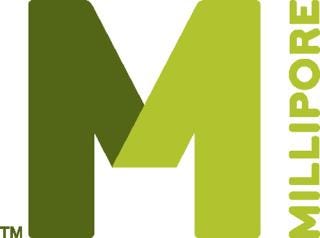Demonstrating Millipore Express® SHR Filters Mycoplasma Clearance CapabilityDemonstrating Millipore Express® SHR Filters Mycoplasma Clearance Capability

Mycoplasma is known to be a common source of bioprocessing contamination and one of the most difficult contaminants to detect. The effect of a mycoplasma contamination can be catastrophic, resulting in loss of a batch, loss of future production, down-time for investigation and corrective actions, and the potential risk of therapeutic supply shortages to immunocompromised patients.
To demonstrate Millipore Express SHR filters’ mycoplasma clearance capability over extended filtration times, two separate Acholeplasma laidlawii retention studies were performed using sterilizing-grade Millipore Express SHR with Prefilter (0.1-µm polyethersulfone) filters and A. laidlawii ATCC® 23206. In these experiments, the test conditions were modeled after typical cell culture processes, and testing was conducted using a low organism challenge level and typical operating pressures. The first experiment tested filters at production scale in a 3×30″ cartridge configuration (44,100 cm2). A second experiment tested the retention of A. laidlawii using Opticap® XL300 pilot-scale capsules.
Background
Currently, no standard industry method exists for testing filters for mycoplasma retention; however, Millipore has a validated procedure for mycoplasma testing that is modeled after the current ASTM® F838-05 test for sterilizing-grade filters. Similar to the ASTM test protocol, this involves using a high challenge level of A. laidlawii (≥107 colony-forming units per cm2 of effective filtration area) and a high differential pressure (30 psid). These severe testing parameters simulate worst-case testing parameters and provide a high degree of assurance that a filter that passes this test will quantitatively retain large numbers of organisms.
Whereas this testing regime is useful in providing a quantitative assessment of sterilizing-grade filter performance, these conditions are not typical of a pharmaceutical biomanufacturing process. As a result, the following two additional experiments were performed to examine filter performance at pilot and production scale under test conditions that more closely model typical cell culture filtration operating parameters.
Procedure
Production Scale Testing 3×30″ Configuration: The 3×30″ filter extended challenge test was scaled from an established filtration process using 47-mm membrane disc filters (13.8 cm2 of total effective filtration area). For this test, three 30-in. Millipore Express SHR with prefilter cartridges (44,100 cm2 of total effective filtration area) were challenged over five hours at a flow rate of 667 mL/min. (Flux 9.1 LMH). Following the filter challenge, A. laidlawii culturing, recovery, and enumeration were performed.
Pilot Scale Testing: Opticap XL 300 Configuration: The Opticap XL300 (290 cm2 effective filtration area) pilot scale capsule (SSC) extended challenge test was adapted from an established process with a few modifications for test stand setup, challenge, and flush volumes. A. laidlawii culturing, recovery, and enumeration were performed. For the duration of the test, pressure was driven at 10 psid with a flow of 300 mL/minute (Flux 620.7 LMH) for an extended challenge time of eight hours.
Results
For all experiments, the system sterility met the acceptance criteria demonstrating the absence of microbial growth and indicating that all equipment was properly sterilized. The average delivered challenge level was 4.85×104 CFU/cm2 for the 3×30″ configuration and 7.81×105 CFU/cm2 for the Opticap XL300 capsules. There was zero passage of challenge organism detected downstream of the 3×30″ cartridge filters (LRV ≥ 4.0). The limit of detection for the 3×30″ configuration experiment was 40 CFU. There was zero passage of challenge organism detected downstream of the Opticap XL 300 capsules (LRV ≥ 8.35). The LOD for the Opticap XL300 capsule experiments was 1 CFU.
Conclusion
Challenge testing performed at pilot and production scales using A. laidlawii demonstrated that Millipore Express SHR with prefilter cartridge filters in a 3×30″ configuration were fully retentive when challenged with 200 L of A. laidlawii at a concentration of 1×104 CFU/cm2 over five hours. The Opticap XL300 pilot-scale capsules were also fully retentive when challenged at an average A. laidlawii level of 7.81×105 CFU/cm2 over eight hours. These tests demonstrate Millipore Express SHR filters’ mycoplasma retention capability at typical cell culture filtration operating parameters and extended processing times.
About the Author
Author Details
Christine Wright is a microbiological scientist, Laurelle Sciola is a product manager, and Danielle Decesaro is an R&D technician at Millipore Corporation, 290 Concord Road, Billerica, MA 01821; 1-800-645-5476.
You May Also Like





